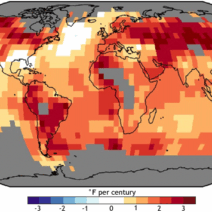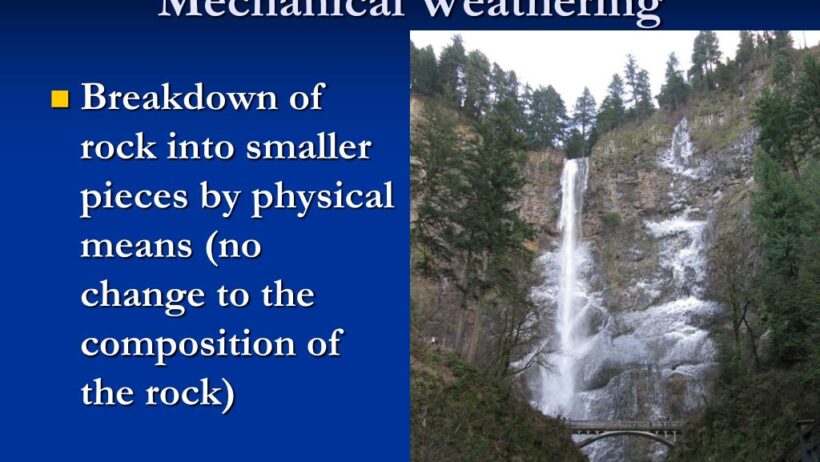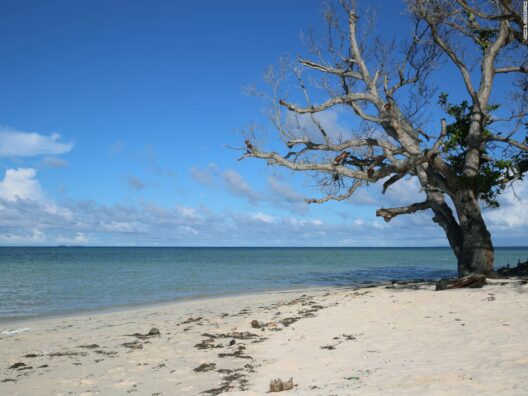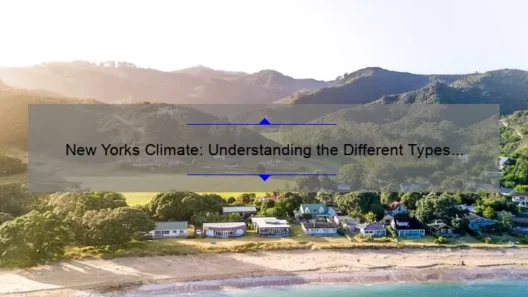Mechanical weathering, a vital natural process, encompasses the physical disintegration of rocks without altering their chemical composition. This geological phenomenon plays a pivotal role in shaping Earth’s landscapes, influencing soil formation, and facilitating various ecological dynamics. It’s intriguing to contemplate how different climatic conditions exacerbate or mitigate mechanical weathering. Understanding these relationships offers insights not only into geological processes but also into environmental shifts and their consequences.
At the core of mechanical weathering are various climatic factors including temperature fluctuations, precipitation levels, and freeze-thaw cycles. Regions characterized by extreme temperature variations present prime conditions for this geological activity. The repetitive expansion and contraction of rock materials occur during temperature shifts, particularly in areas with significant daily temperature gradients. Such fluctuations are particularly pronounced in arid and semi-arid climates, where diurnal temperature variations can reach substantial degrees. In these environments, the insolation during the day heats the rock surfaces, causing them to expand, while at night the temperatures plummet, leading to contraction. This perpetual cycle induces strain within the rock structure, ultimately resulting in cracks and fragments. The resultant debris, though minuscule, contributes meaningfully to sediment dynamics and soil genesis.
Exploring locations with arid climates, one finds desert regions often exemplifying this process. The landscapes of deserts are rife with jagged cliffs and weathered boulders that have undergone extensive mechanical breakdown. These formations stand as testimony to the relentless forces of thermal expansion. Here, the absence of moisture facilitates rapid temperature swings, maximizing the potential for rock fracturing. In contrast, environments laden with vegetation typically mitigate mechanical weathering to some extent. The presence of roots and organic matter helps stabilize the substrate, creating a protective layer against erosional forces.
Additionally, the influence of moisture, particularly in the form of freeze-thaw cycles, cannot be understated. Regions that experience seasonal frost, such as temperate climates, see mechanical weathering amplified during colder months. Liquid water infiltrates fissures within the rocks; as temperatures decline, this water freezes and expands, exerting significant pressure that can split apart the rock. This process, known as frost wedging, showcases the direct correlation between climatic conditions and mechanical weathering. Notably, the transition from summer to winter in such climates often fosters widespread disintegration of rocky terrains due to the cyclical nature of thawing and freezing.
Moreover, coastal environments—where saltwater intrusion occurs—exhibit unique interactions that facilitate mechanical weathering. Here, salt weathering becomes paramount. As seawater evaporates, salts crystallize within the cracks of rocks, further compounding the stresses acting on the rock structure. This crystallization pushes apart the grains of rock, leading to their eventual disintegration. Thus, in regions subjected to marine climates, mechanical weathering manifests in symbiosis with salt weathering—a phenomenon that distinctly highlights how climate and geomorphological factors intertwine.
Yet another climatic consideration is precipitation. While moisture is essential for many forms of weathering, excessive rainfall can also bolster mechanical weathering processes. In regions characterized by heavy rain, the saturation of soil can lead to landslides, where heavy rock masses are physically displaced. The constant erosion caused by rainfall results not only in the breakdown of rock but also in the transport of sediments, fundamentally altering landscapes. Rainfall patterns can dictate soil moisture levels that either exacerbate or alleviate mechanical processes significantly.
Human activities further complicate these natural processes. Urbanization, for instance, often leads to increased runoff and reduced vegetation cover, dramatically influencing local weathering patterns. The removal of protective vegetation accelerates exposure to mechanical forces. As a result, regions that were once stabilized can succumb to rapid erosion and rock disintegration. Furthermore, climate change poses an insidious threat to these dynamics. As global temperatures rise, the intensity and frequency of weather-related events, such as storms and extreme temperature fluctuations, become amplified. This raises concerns about the future integrity of geological formations.
In conclusion, the intricate relationship between climate and mechanical weathering presents a fascinating field of study. The causal connections between temperature variations, moisture levels, and the composition of local ecosystems reveal deeper underlying principles of our planet’s ecological and geological frameworks. Understanding these interactions underscores the importance of preserving the delicate balance of natural processes, as the implications extend far beyond mere rock breakdown. Enhanced awareness leads to advocacy for responsible stewardship of both land and climate—a prerequisite for sustaining the diverse ecosystems that depend on these geological transformations.








